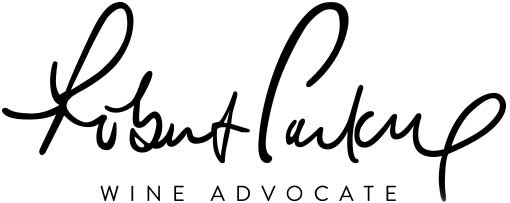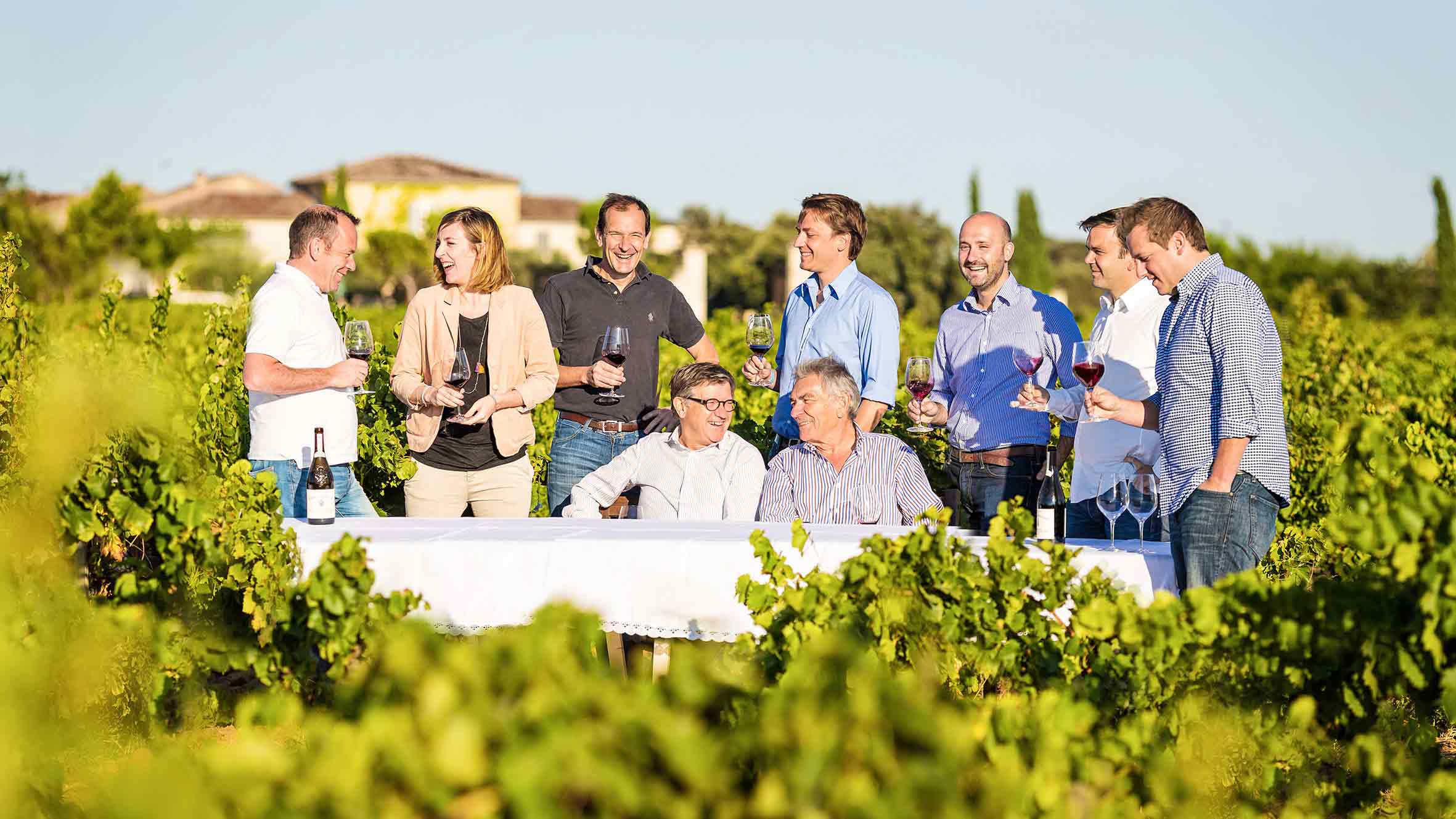
Perrin / Beaucastel: Chateauneuf du Pape Blanc Chateau de Beaucastel 2020
- 2
- Roussanne 80%, Bourboulenc 5%, Clairette Blanche 5%, Grenache blanc 5%, Picardan 5%
- 5
- weiß, trocken
- 14,0% Vol.
- Trinkreife: 2024–2050
- Verpackt in: 6er OHK
- 9
- voll & rund
- niedrige Säure
- exotisch & aromatisch
- 3
- Lobenberg: 96–97+/100
- Decanter: 98/100
- Wine Spectator: 95/100
- Jeb Dunnuck: 94+/100
- Parker: 94/100
- Suckling: 94/100
- Galloni: 94/100
- 6
- Frankreich, Rhone, Chateauneuf du Pape
- 7
- Allergene: Sulfite,
Abfüller / Importeur: Perrin / Beaucastel, La Ferriere - Route de Jonguières, 84100 Orange, FRANKREICH

Heiner Lobenberg über:
Chateauneuf du Pape Blanc Chateau de Beaucastel 2020
/100
Lobenberg: 2020 gab es an der Rhône insgesamt relativ normale Mengen. An der Nordrhône vielleicht sogar etwas mehr als im Durchschnitt. Im Süden hatten die Reben deutlich mehr mit Trockenstress zu kämpfen, weil hier im Sommer nur wenige Millimeter Regen fielen. Aber besonders die Reben auf Lehmböden und die alten, tiefwurzelnden Rebstöcke, konnten das Ganze gut wegstecken. Probleme gab es erst während der Lese, weil es um den 20. September relativ starke Regenfälle zwischen 40 und 60 Millimetern pro Quadratmeter gab. So kann man durchaus unterscheiden zwischen Weinen, die vor dem Regen gelesen wurden und jenen, die erst danach den Weg in die Keller fanden. An der Südrhône erinnert 2020 sehr an 2018. Wir haben eine sehr saftige und reiche Frucht, aber nicht dieses extrem Fette, ja fast Dramatische, aus 2019. Im Süden ist es – anders als an der Nordrhône – eher kein klassischer, sondern ein saftiger, fruchtstarker Jahrgang wie 2018, der auch schon ziemlich perfekt gelungen war. In Summe ist 2020 an der Rhône ein großes Jahr. Balancierter und harmonischer als das Kracher-Jahr 2019. Dieser Châteauneuf-du-Pape blanc besteht immer zu 80% aus Roussanne, der Rest ist Bourboulenc, Clairette, Picpul, Picardan und ein kleines bisschen Grenache Blanc. Es gibt in diesen 80 Hektar Beaucastel einen Plot, wo alle Weißen zusammen stehen. Hier ist es ein klein bisschen sandiger als im Rest um noch feinere Weine zu geben. Alle Ganztrauben werden ca. 2-3 Stunden in der Presse belassen bevor gepresst wird, um ein bisschen Skin-contact zu haben. Dann wird gepresst, und der ungefilterte Saft geht ins große Fuder, wo eine spontane Fermentation stattfindet. Danach Überführung zu 50% ins neue Barrique und zu 50% in Zweit- und Drittbelegungen. In 2020 kommt der Wein mit einer reichen und intensiven Nase, leicht pfeffrig. Darunter süßliche Quitte, Sternfrucht und ein Hauch Anis. Aber nicht zu süß, sondern durchaus strukturiert. Mit einer gewissen Pfefferschärfe geradeauslaufend. Viel mineralischer Druck im Mund, wow! Die intensive Frucht wird gebändigt durch eine hohe Mineralität. Der Wein zeigt leicht Lakritze im Mund, Salmiakpastillen. Wieder Anis und Sternfrucht. Süßliche Netzmelone und eine feine Honig-Salz-Note im Finale. Die Balance wird eindeutig durch die immense Mineralität gehalten. Sehr eindrücklicher Châteauneuf-du-Pape, mit viel Power, aber ohne Fett. Hocharomatisch, intensiv, sehr reich, Zeit geben! 96-97+/100

/100
Decanter über: Chateauneuf du Pape Blanc Chateau de Beaucastel
-- Decanter: Closed for now, with apricot and a touch of crème anglaise. Full-bodied but not massive, this has plenty of tension that keeps things neat, a shining beam of acidity running through it. Real length and intensity here, it's remarkably saline this year, displaying great power and balance. 80% Roussanne, 10% Grenache Blanc and Clairette, 10% Piquepoul Blanc, Picardan and Bourboulenc. Part of the blend was matured in two and three-year-old barriques for one year. 98/100

/100
Wine Spectator über: Chateauneuf du Pape Blanc Chateau de Beaucastel
-- Wine Spectator: Beautifully rendered, with a pure display of white peach, Cavaillon melon and mirabelle notes gilded from start to finish with honeysuckle and acacia. Pretty wet stone note gives the finish spine as the fruit and floral notes linger prettily. Roussanne, Grenache Blanc, Clairette and Bourboulenc. Drink now through 2027. 95/100

/100
Jeb Dunnuck über: Chateauneuf du Pape Blanc Chateau de Beaucastel
-- Jeb Dunnuck: Looking at the 2020 Châteauneuf Du Pape Blanc, which is 80% Roussanne and the rest Grenache Blanc and Clairette, it has a rocking nose of apple blossom, melon, honeyed minerality, and spice as well as medium to full-bodied richness on the palate. It picks up a terrific green almond-like nuances with time in the glass, and it’s textured, balanced, and just another brilliant white from this team. 94+/100

/100
Parker über: Chateauneuf du Pape Blanc Chateau de Beaucastel
-- Parker: Beaucastel's 2020 Chateauneuf du Pape Blanc is 80% Roussanne (half in new oak and half in second-use wood) and 20% other permitted varieties (made in stainless steel). Honeyed pear and pineapple notes dominate the nose, while the palate is full-bodied rich and luscious, yet remains vibrant, refreshing and long on the finish. I find it delicious now and don't see any need to age it, although it will undoubtedly hold together for several years. 94/100

/100
Suckling über: Chateauneuf du Pape Blanc Chateau de Beaucastel
-- Suckling: You could almost mistake this very sophisticated and elegant white Chateauneuf for a white Burgundy, if it wasn’t for the pronounced fresh-apricot note. This is ripe and fleshy, but in a refined way, the acidity at the finish supple, but it remains very clean and straight. A blend of roussanne with a small amount of grenache blanc. From organically grown grapes. Drink or hold. 94/100

/100
Galloni über: Chateauneuf du Pape Blanc Chateau de Beaucastel
-- Galloni: The 2020 Châteauneuf-du-Pape Blanc displays enticing tertiary characteristics already at this young age. It opens with well-defined aromas of petrol, dried ginger, jasmine, lemon zest, ripe pear and beeswax. Moving seamlessly across the palate, the 2020 Blanc is medium to full-bodied, impeccably well-balanced and concludes with a bright finish. 94/100
Famille Perrin
Beaucastel ist ganz sicher seit Jahrzehnten der Primus inter Pares in der südlichen Rhone und einer der wenigen Betriebe, der für den roten Chateauneuf noch alle 13 zugelassenen Traubensorten verwendet.


